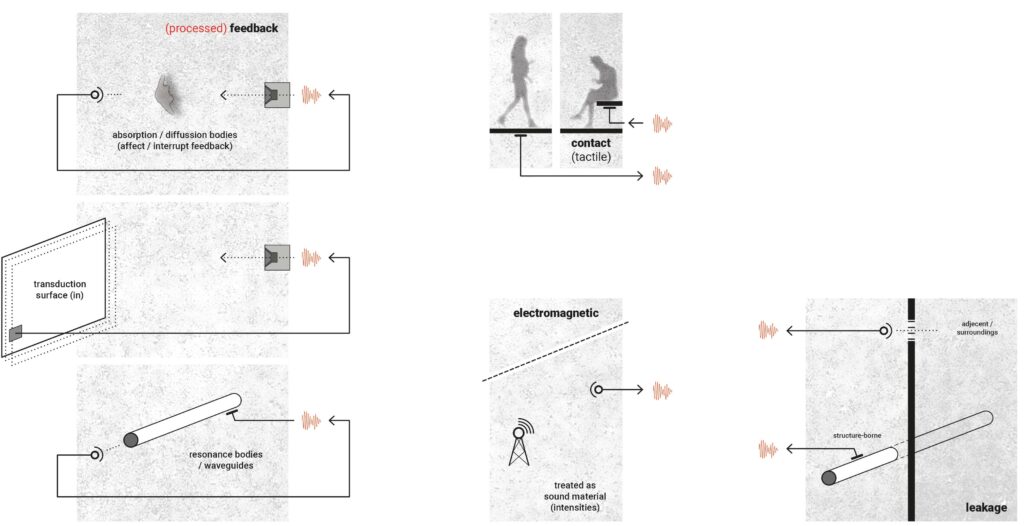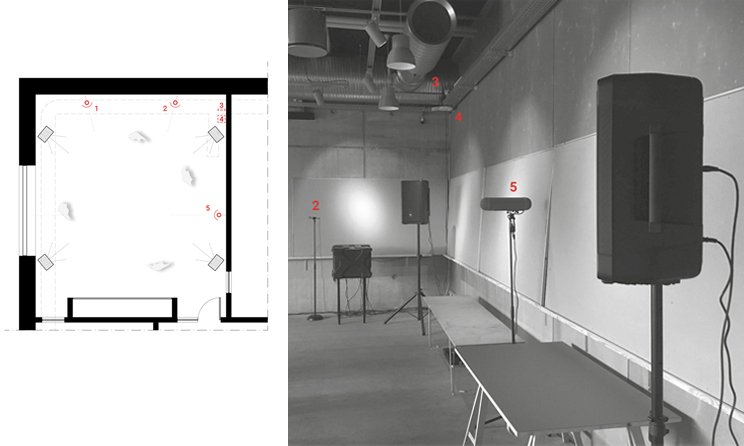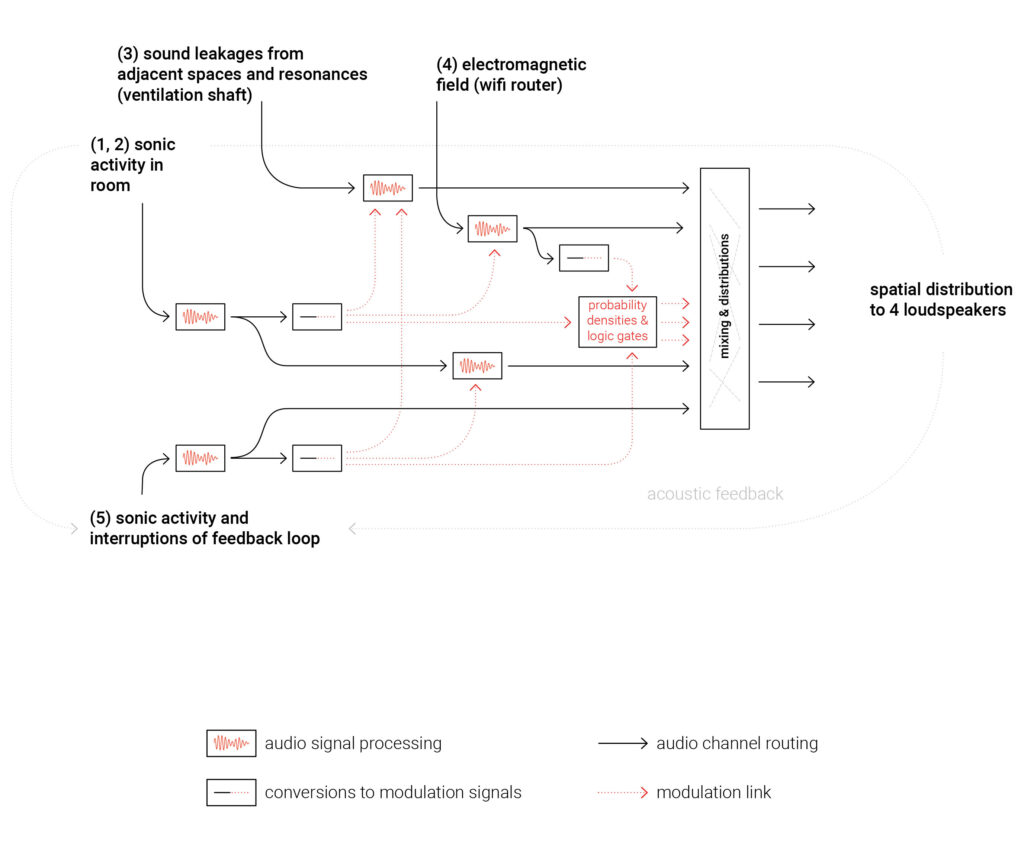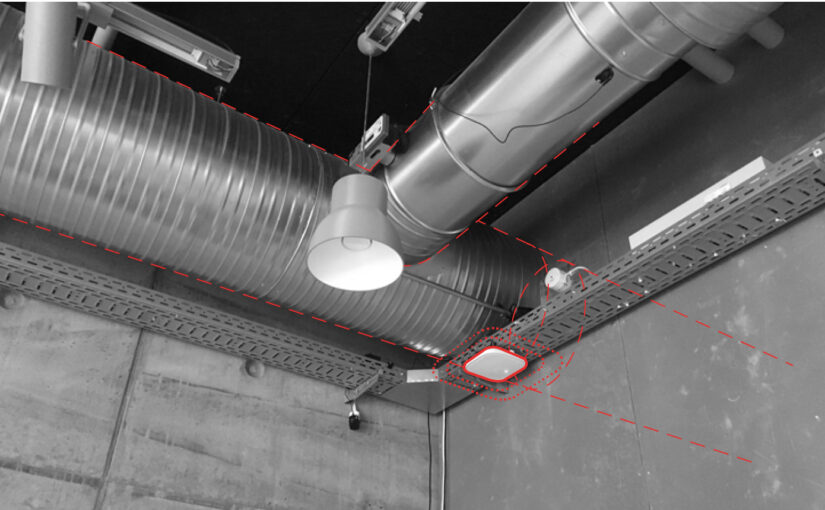Site-Specific Installation of an Architectural Machine
Presented at CA2RE Aarhus 2023
The sound installation seeks to actively engage the listeners (audience) in the process of modulation (in modifying the existing sound environment, exploring the possibilities for another space, other body-machine relations) and makes audible some of the given site’s spectral complexity. It is part of a series of site-specific interventions focussing on the relations between bodies, machines, and environments.
The installation consists of a technical system of transducers (in this case, microphones and loudspeakers) and processing units. It is an architectural machine which is installed in the exhibition space which is, as it were, plugged into the physical space, into material structures and existing circuits on site. Various types of microphones pick up activity in a wide spectrum, ranging from acoustic/mechanical to electromagnetic waves, and convert them into audio signals. In turn, loudspeakers convert the signals back into mechanical energy, into sound waves.
Acoustic and imperceptible waves, sound leakages from adjacent spaces, and structure-borne vibrations, produced by human and non-human activity, are converted into electrical signals, processed in ‘real time’, spatially distributed and transduced back into the acoustic environment. The spatial configuration of transducers allows specific feedback loops and avoids others. Audio signals are processed in such a way that they mutually affect each other, allowing for new sonic and spatio-temporal relationships to emerge. The audience affects the sound environment in various ways (as sound sources, through movement and position, diffusion and absorption in relation to acoustic feedback) and is invited to explore relations and co-constitute the sound environment (co-create the continuous spatial sound composition).


The set of transduction circuits (the inputs and outputs their positions in space) and processing patches (routed channels, modulation links, functions) were determined through an acoustic exploration and analysis of the given site, which included identifying signals and sound sources by means of listening through various types of microphones.

Audio excerpt will be added soon.
Special thanks to Claus Peder Pedersen, Mia Mimi Flodager, and Kim Kruse (Aarhus School of Architecture), Donia Jourabchi (for making available her microphones and equipment), and my PhD promotors Roberto Cavallo and Heidi Sohn. Thanks to Charlotte for the support during the process.

